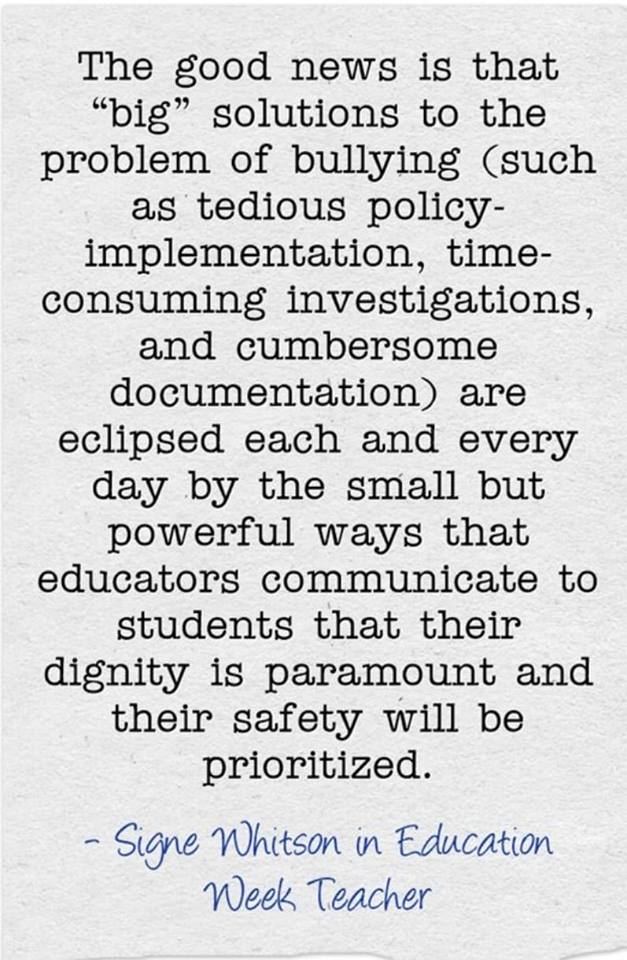Addressing Bullying in School
In this week’s Classroom Q&A, Education Week’s Larry Ferlazzo asks:
How can teachers and administrators best address bullying in school?
Here’s my response, based on material from my book, 8 Keys to End Bullying: Strategies for Parents & Schools.
The good news is that “big” solutions to the problem of bullying (such as tedious policy implementation, time-consuming investigations, and cumbersome documentation) are eclipsed each and every day by the small but powerful ways that educators communicate to students that their dignity is paramount and their safety will be prioritized. The hopeful news is that while there is no single cure-all to cruelty, there are all kinds of simple, focused, quick, and accessible strategies that administrators and teachers can use to bring an end to bullying in their schools and classrooms. Best news yet: Most of these bullying prevention strategies simultaneously build more positive relationships between students and staff.
What follows are 8 small (in terms of daily time commitment) yet big (in terms of their effectiveness) strategies teachers and administrators can use to address bullying in schools:
1. Understand the differences between “rude,” “mean,” and “bullying” behavior . Intervene accordingly.
2. Recognize the warning signs of a child who is being bullied. Reach out to young people who bully others. Insist that all young people are worthy of help and guidance from a caring adult.
3. Prioritize positive relationships between staff and students. When young people feel connected to adults, they are less likely to bully others and more likely to report incidents of bullying.
4. Create cultures of kindness in your school. Compassion, kindness, and empathy are the antidotes to cruelty, social exclusion, and bullying.
5. Reject the “kids will be kids” mentality. Bullying is never just a “rite of passage” for young people; it is an abuse of power. Kids need adult help in order to restore healthy power balances among peers.
6. Bullying tends to happen in the places and spaces where adults are absent. Increase adult presence in social spaces including hallways, locker rooms, recess, and the bus. Eat lunch with kids. Simply “being there” can significantly reduce the incidence of bullying in schools.
7. Make bullying prevention an everyday activity;not just a once-and-done assembly or week-long poster contest. Integrate bullying-prevention activities into daily routines, such as morning meetings, advisories, buddy systems, lunchtime seating arrangements, and more.
8. Establish a partnership with parents about bullying-prevention practices. Work with families to create guidelines for their kids’ social-media use and set shared standards for how kids must treat each other online.
For more responses to Larry Ferlazzo’s question, please visit the entire post on Education Week.
For more information and training opportunities, click here.
– ———————————————————————————————– –
This entry was posted by signewhitson on February 20, 2019 at 4:30 pm, and is filed under bullying. Follow any responses to this post through RSS 2.0. You can leave a response or trackback from your own site.
Leave a Reply